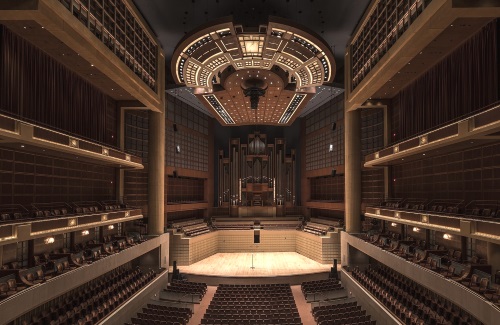
Early Analysis
In ancient times (the 1970s), the alignment of sound systems centered around a crude tool known as the Real-Time Analyzer (RTA) and a companion solution device, the graphic equalizer.
The analyzer displayed the amplitude response over frequency in 1/3 octave resolution and the equalizer could be adjusted until an inverse response was created, yielding a flat combined response.
It takes a negligible skill level to learn to fiddle with the graphic EQ knobs until all the LEDs line up on the RTA. It is so simple that a monkey could do it, and the result often sounded like it.
Although these tools were the standard of the day, they have severe limitations, and these very limitations can lead to gross misunderstanding of the interaction of the speakers to each other and the room, resulting in poor alignment choices.
One such limitation is the fact that the RTA lacks information regarding the temporal aspects of the system response. There is no phase information nor any indication as to the arrival order of energy at the mic.
The RTA cannot discern direct from reverberant sound, nor does it indicate whether the response variations are due to loudspeaker interaction alone and loudspeaker/room interaction. Therefore the RTA provides no help in terms of critical speaker positioning, delay setting or architectural acoustics.
Second, the RTA gives no indication as to whether the response at the mic is in any way related to the signal entering the loudspeakers. The RTA gives a status report of the acoustical energy at the microphone, with no frame of reference as to the probable causes of response peaks and dips.
These peaks and dips could be due to early room reflections or speaker interactions, which can respond favorably to equalization. However, the irregularities in response could be from late reflections, noise from a forklift engine or reflections from a steel beam in front of the loudspeaker.
The equalizer will be ineffective as a forklift or steel beam remover, but the RTA will give you no reason to suspect these problems. A system that is completely unintelligible could look the same as one that is clear as a bell.
Third is the fact 1/3-octave frequency resolution is totally insufficient for critical alignment decisions. In addition, there is the misconception that a matched analyzer/filter set system is desired. It is not. The analyzer should be three times the resolution of the filter set in order to be able to provide the visible data needed to detect center frequency, bandwidth and magnitude of the response aberrations.
A 1/3 octave RTA is only able to reliably determine bandwidths of an octave or more. What appears as a 1/3 octave peak may be much narrower. What appears as a broad 2/3 octave peak, may actually be a high narrow peak placed between the 1/3 octave points. What will your graphic equalizer do with this?
Unfortunately the absence of this critical information lulled many users into a sense of complacency predicated on the belief that equalization was the only critical parameter for system alignment. In countless cases, equalizers were employed to correct problems they had no possibility of solving, and could only make worse.
Graphic equalizers have no possibility of creating the inverse of the interactive response of the speakers with the room. Simply put: “You can’t get there from here.”
The audible results of all this tended to create a generally negative view of audio analyzers. Many engineers concluded that their ears, coupled with common sense could provide better results than the blindly followed analyzer.
As a result, though RTAs were often required on riders, they only received cursory attention on show day.
